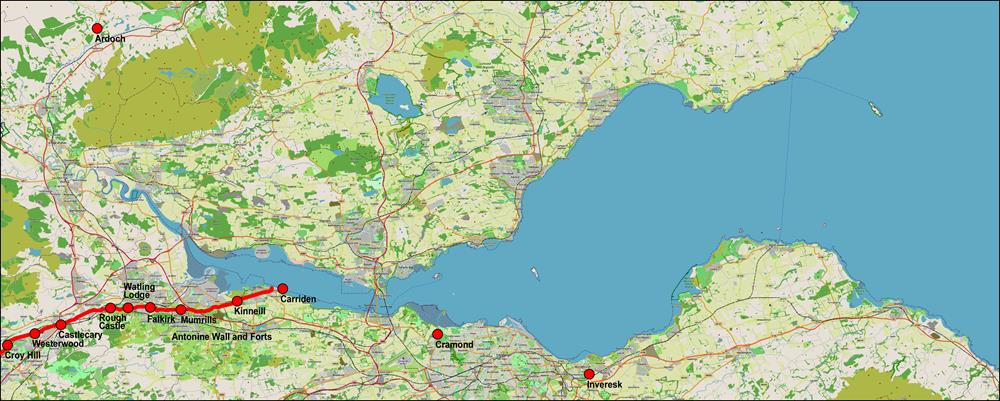The Roman Occupation 43 to 410 AD
| < Tribes and Clans | Δ Index | Kingdom of the Picts > |
From 43 AD until 410 AD, the British Isles were occupied by the Romans.
In 55BC having completed the conquest of Gaul (modern day France) to extend the Roman republic, Julius Caesar first led a Roman force to established a beachhead into Britain. He returned in greater force in 54BC, advanced inland and established a few alliances before being forced to withdraw to tackle revolts in Gaul.
Over the following years, British tribes had diplomatic and trading links with what had become the Roman Empire, paying taxes and custom duties to Rome.
About a century later around AD 40, the Catuvellauni tribe became the most powerful kingdom in south-eastern Britain when they conquered the Atrebates and expelled Verica who had been recognised by Rome as the rightful king of the Atrebates. In AD 43 the emperor Claudius ordered an invasion of Britannia on the pretext of reinstating Verica as king of the Atrebates.
Over the next 30 years they pushed their way north conquering all the local tribes. In 79AD, they reached the border of what is now Scotland and the Roman governor Agricola, ordered a fleet to survey and map the coast of Scotland.
By AD 83 the Romans had conquered southern Scotland, building a line of forts across the Central belt, and up into Perthshire.
The Caledonian tribes to the north resisted the invasion, with guerrilla attacks on individual Roman forts and small bands of soldiers. By the summer of AD 84 the legions had pushed deep into the Caledonian homelands. Here the Caledonians made the fatal error of confronting them head on at the Battle of Mons Graupius.
Some 30,000 Caledonians faced a Roman army of about half that size. At one point in the bloody hand-to-hand fighting the Caledonians managed to outflank the Roman infantry, but the Roman cavalry arrived to save the day. In the bloodbath that followed 10,000 men were slaughtered.
A full-scale occupation of Scotland was averted when Agricola was ordered back to Rome to tackle a military crisis on the Rhine and Danube frontiers. The Romans re-entrenched southwards establishing the northern most frontier of the Empire at Hadrian’s Wall built in 122AD between the Solway and the Tyne.
Hadrian’s successor, Antoninus Pius, attempted to push the frontier further north and built the Antonine Wall around AD 142.
 Roman Forts and Antonine’s Wall
Roman Forts and Antonine’s Wall
Shortly after he died in AD 161 it was abandoned in favour of Hadrian’s Wall.
| < Tribes and Clans | Δ Index | Kingdom of the Picts > |